Guitar Capo: Choosing and Using One
There are a lot of good reasons to use a guitar capo. I know, you’ve probably heard a guitar player say you shouldn’t. But, if you have no intention of being the next Carlos Santana, then you’ve got the green light to use a guitar capo whether you’re playing an acoustic, electric or classical guitar.
Why should you use one? Because it makes songwriting easier.
For example, you can find your key by simply moving up and down the neck of your guitar without having to transpose your chords into a different key. And, you don’t end up with a bunch of odd chords to learn. Only know four chords? Perfect! That’s three more than you need for a song.
Need to change the key because you only know G, C, D and Em and your key is B? Great – throw on a capo.
It’s a convenience that helps you move forward faster. So in my book, that makes it a no brainer. Use a capo.
Ahhh, but which one. There are so many to choose from! I’ve gathered together my favorites and from my pile of capos, which are like office supplies for me, and highlighted some of the best ones.
Standard Guitar Capos
There are things called partial guitar capos, which I cover in another post. For this one, we’ll focus on standard guitar capos, which cover the width of the fret board on a standard sized guitar. Depending on your guitar neck (c-shape, v-shape, etc.), some of these will work better than others. If I’ve used it on a particular brand of acoustic guitar I’ve noted that as well.
All of the below are for steel-string, six-string steel acoustic guitars. Most electric guitar players won’t use one, but for that, I’d go with a Kyser or G7th.
There are classical versions of the Shubb S1, S3 and C3 series capos available. As well as 12-string capos from Shubb, Paige and Kyser that are great versions of the 6-string capos.
You can find those by navigating to the 6-string version on Amazon. You’ll usually find them on the page somewhere, or just use these search urls: Classical Guitar Capo or 12-String Guitar Capo.
U-SHAPE CAPOS WE RECOMMEND
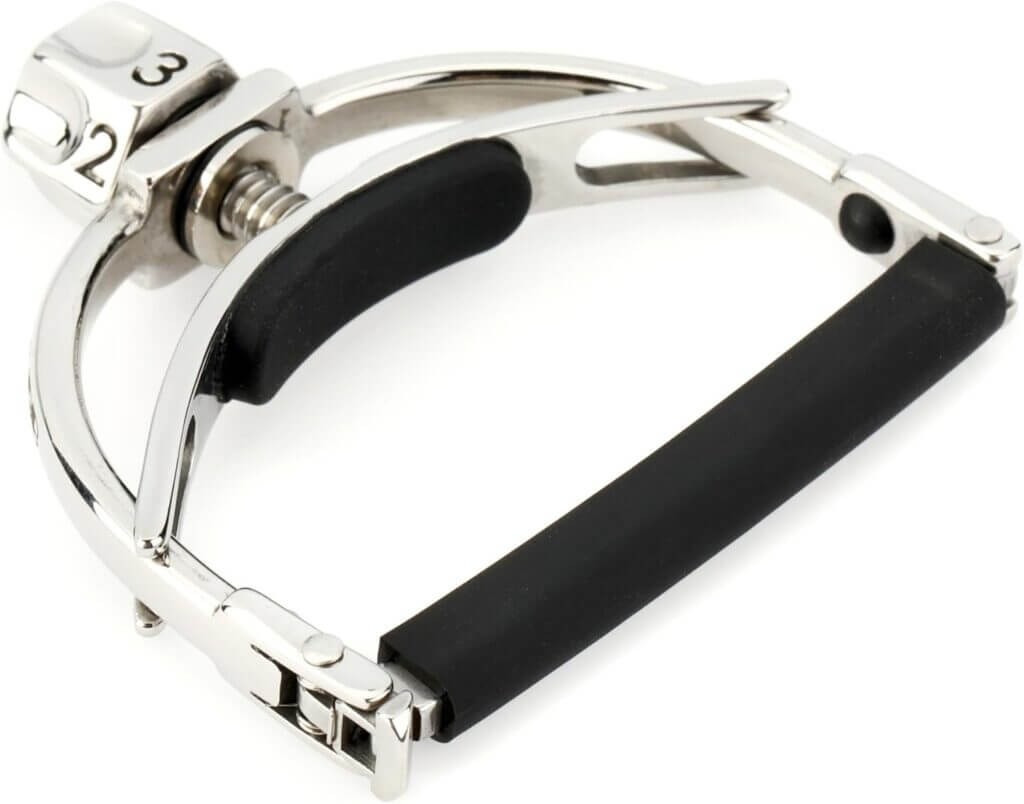
I love me some Shubb capos! You’re going to see alot of them down the page.
I got this one walking around International Folk Alliance International back in February of 2020. This is one of the best things Shubb has ever invented. It’s lightweight, not clumsy to use and can be shifted to the top of the neck behind the nut when you don’t need it. This one actually replaced a Taylor capo I was using that was just to hard to unlock once engaged on the neck (see below).
Guitars I’ve used it on: Guild, Gibson, Martin, Breedlove, Santa Cruz, Stone Bridge, Rain Song and Taylor.
I love me some Shubb capos! You’re going to see alot of them down the page.
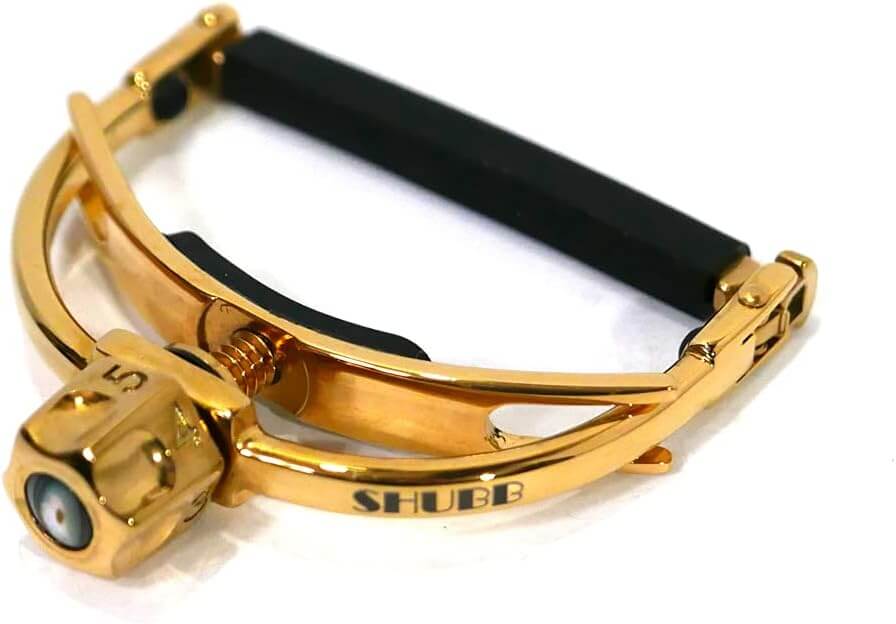
Shubb Royale F1 Fine Tune Capo
This is just a fancier version of the nickel Fine Tune. I’m not much for the gold look, but a nice looking capo with all of the same great qualities of the original F1 Fine Tune.
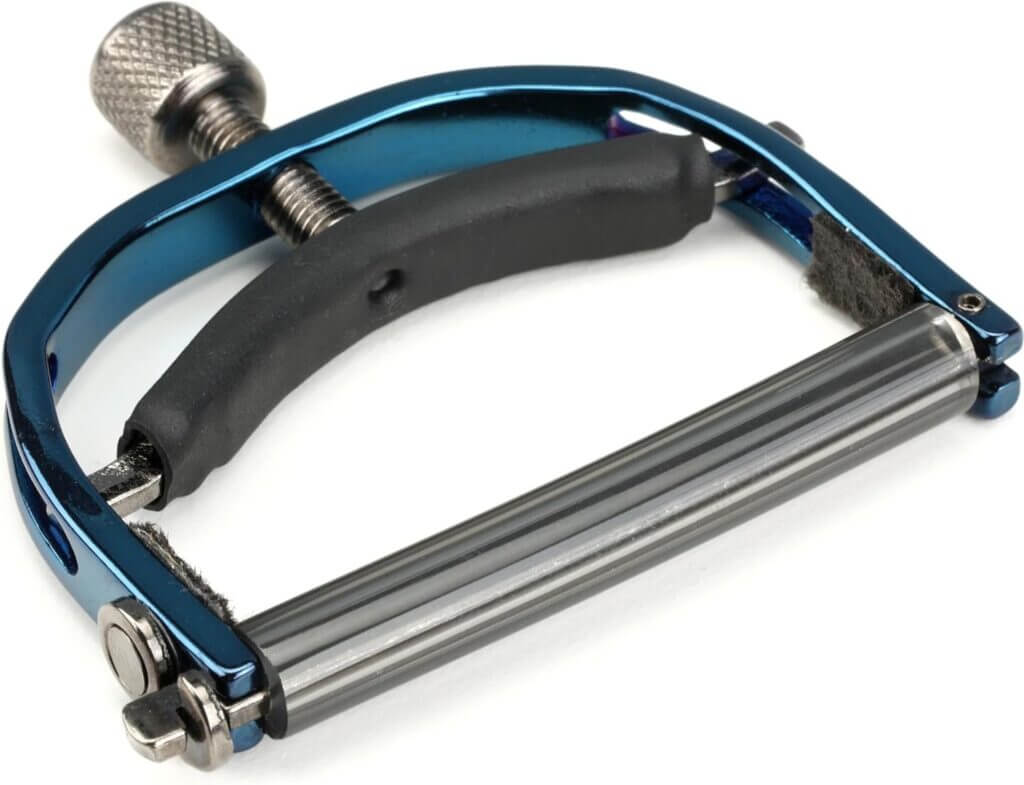
Yes – this one looks exactly like the Shubb F1, but it’s actually the original of the original U-shapes. They’ve upgraded the bar latch on this one so you avoid the issue of unlatching that happens with the first generation versions. This was my go-to prior to the Shubb and a great guitar capo with all of the same pros and cons as the Shubb F1. They do make a 12 string version!
Guitars I’ve used it on: Guild, Gibson, Martin, Breedlove, Santa Cruz, Stone Bridge, Rain Song and Taylor.
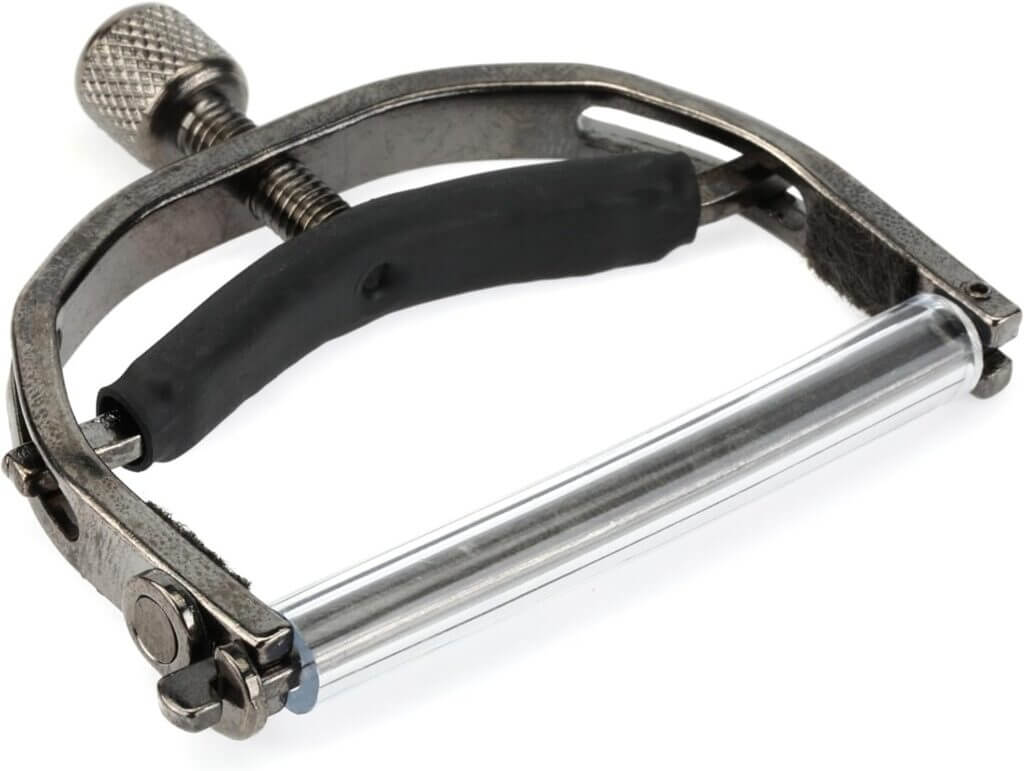
If you’ve got a guitar with a relatively wide and/or shallow neck, and you love a U-shape, then this capo is for you! Perfect fit for something wider than a standard neck that just makes the F1 or standard Paige or Taylor too snug.
Guitar I’ve used it on: Gibson Advanced Jumbo
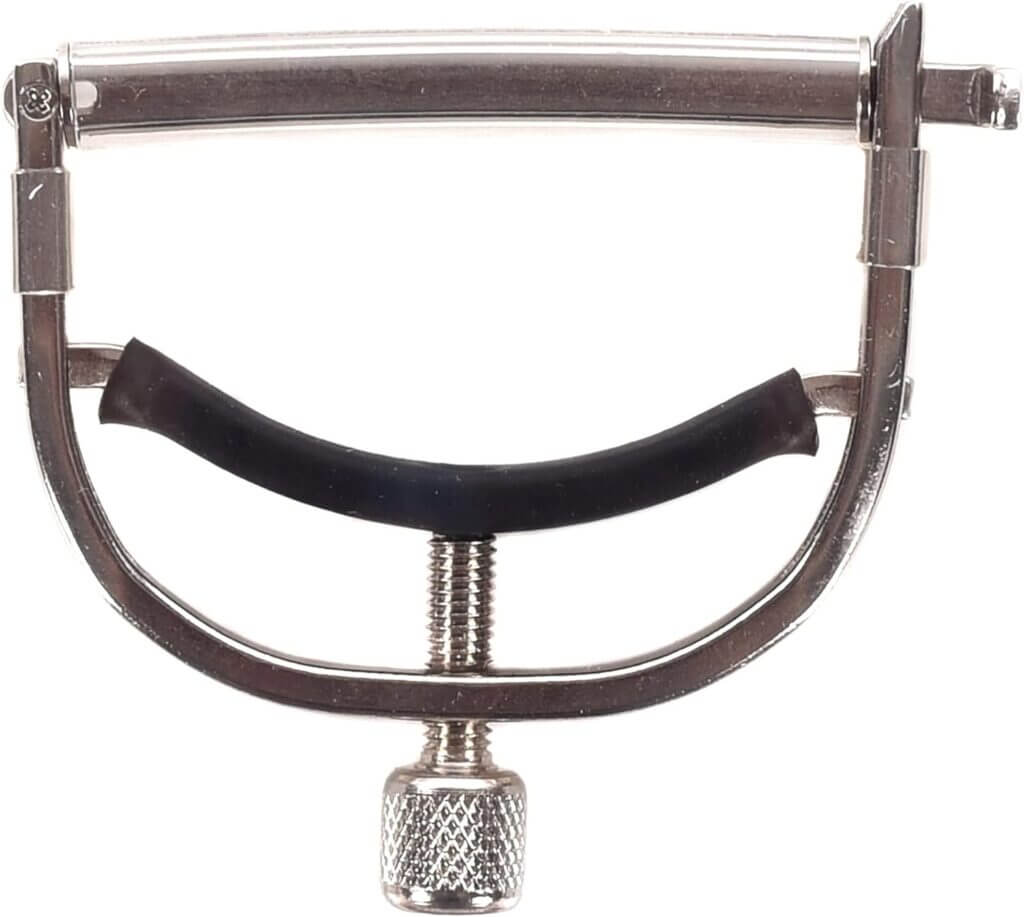
I have to admit, this isn’t one of my favorites. They tend to be hit and miss with the fret bar mechanism. I have one that’s easy to push in and disengage, while the other takes two hands. I also don’t like the fact that I’m pushing on the end of something that’s still attached to my guitar.
While it works great once it’s on, it’s the removing that’s the struggle (at least for someone who doesn’t have jar-twisting hand strength – and why would you want it for a guitar capo!)
Guitar I’ve used it on: Stonebridge, Gibson
CLAMP-STYLE CAPOS WE RECOMMEND
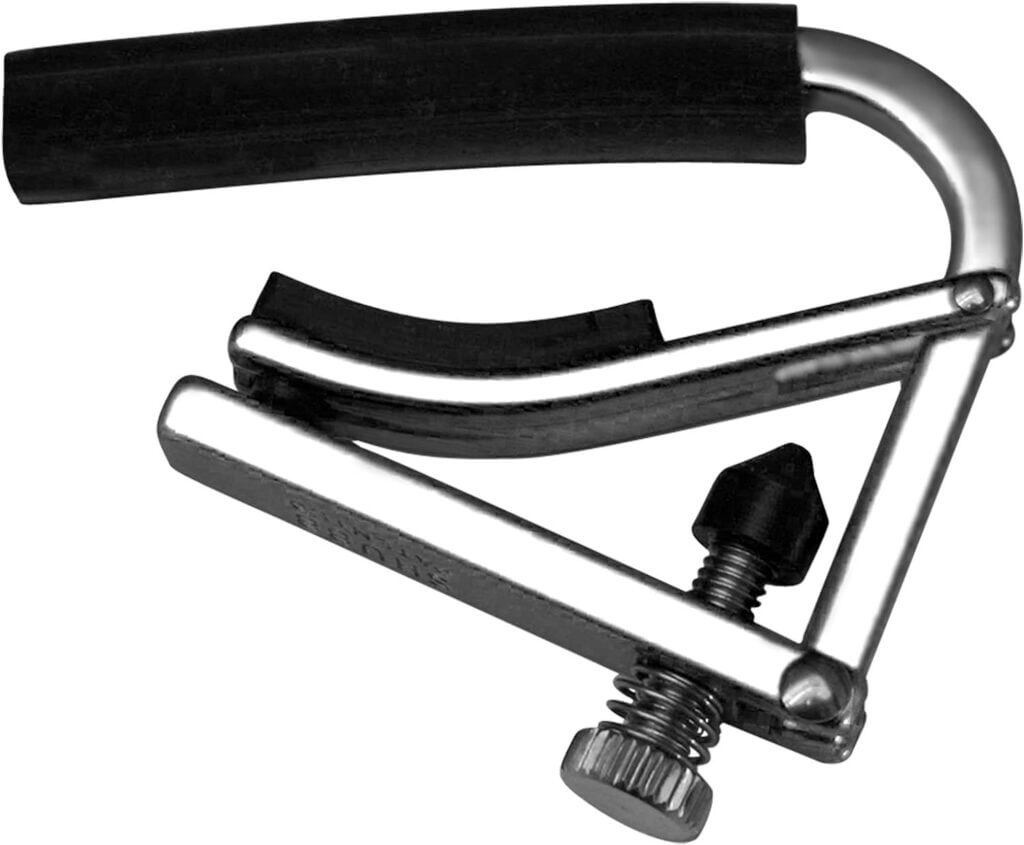
I’ve been using the same one for 15 years and it’s never let me down. Solid construction and the simplicity of the mechanism limits what can break on the capo. This also works very well as a master guitar capo if you’re using 2 or more capos on the neck.
Guitars I’ve used it on: Guild, Gibson, Martin, Breedlove, Santa Cruz, Stone Bridge, Rain Song and Taylor.
Pros & Cons – it’s a Shubb! No downside to any Shubb capo in my book.
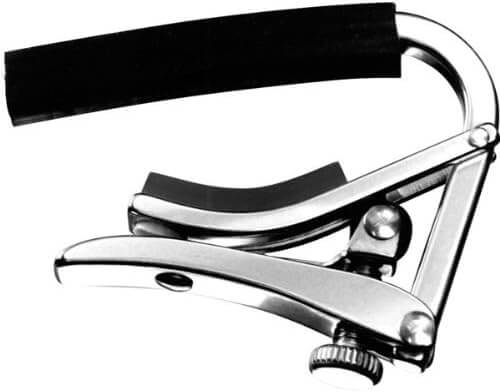
I’m not a huge fan of the little wheel on there. More things than can break in my opinion, but hey, they never break – so there’s that! I have a few of these as spares and just in case a fellow musician asks to borrow a capo. They’re like pens, you’re not going to see it again.
Pros & Cons – it’s a Shubb! No downside to any Shubb capo in my book.
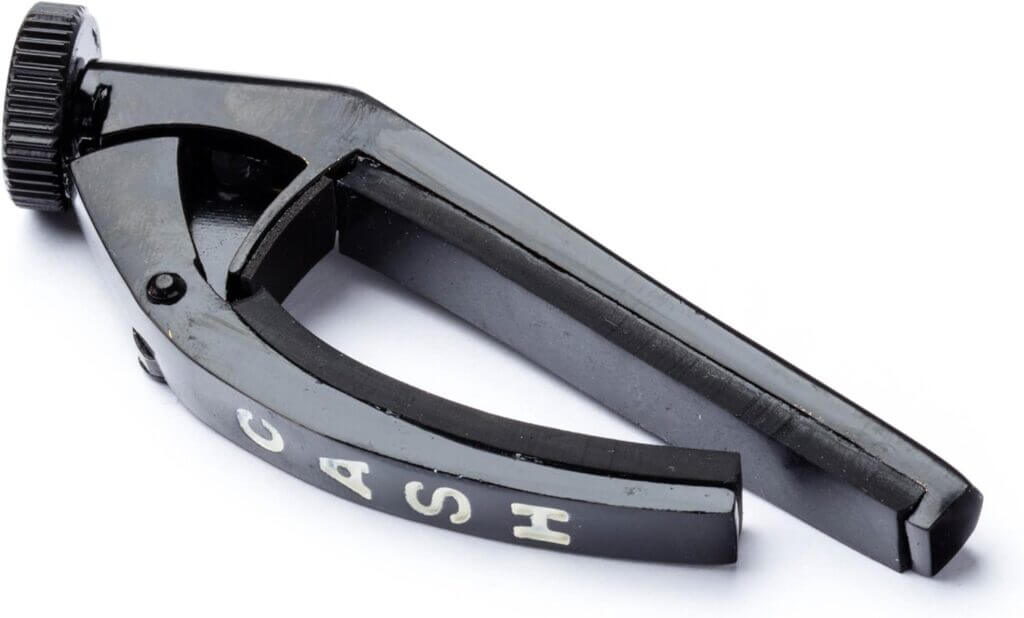
I love this flat-backed capo. It’s great on necks that are more of a C-shape. It’s reliable, easily fits in a pocket, the mechanism is angled down slightly so it stays out of your way, and it rarely requires re-tuning. The “Cash” version is a Dunlop Victor Capo and comes in all black. Of course.
Guitars I’ve used it on: Guild, Gibson, Martin, Breedlove, Santa Cruz and Stone Bridge.
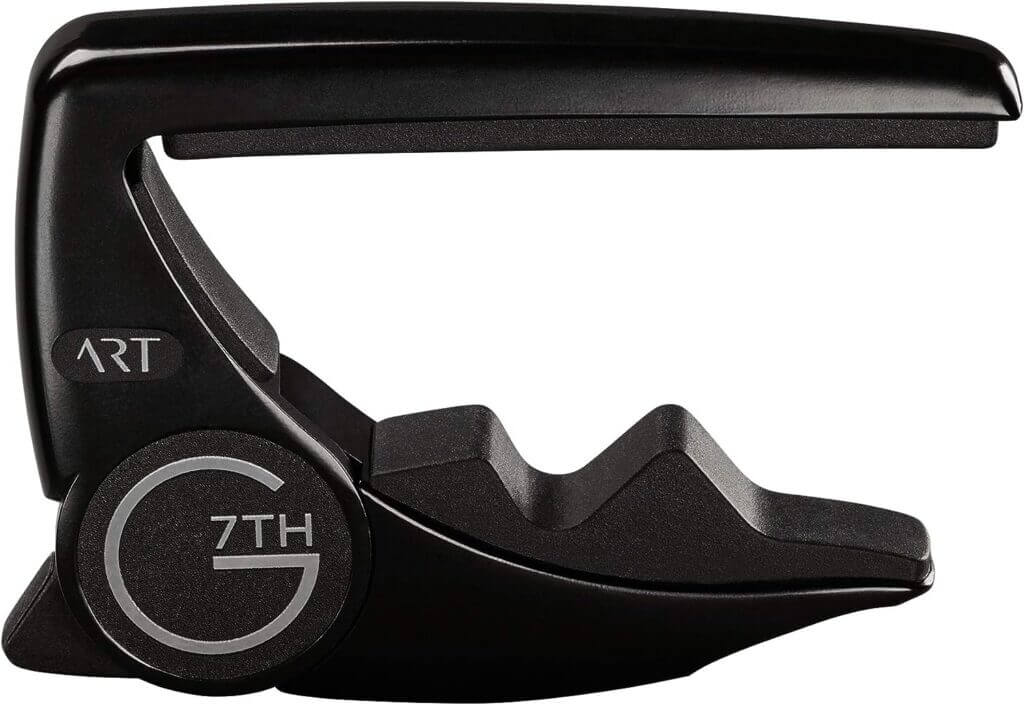
Amazingly, this capo is easy to squeeze onto the neck, and it holds! And, if you ever need it a little tighter, just squeeze the open ends together a bit for a snug fit. The other nice thing about it is you don’t have any bothersome handles or screws sticking out above or below your guitar when you’re playing. A clean playing field and look.
Guitars I’ve used it on: Guild, Gibson, Martin, Breedlove, Santa Cruz, Rain Song, Stone Bridge and Taylor.
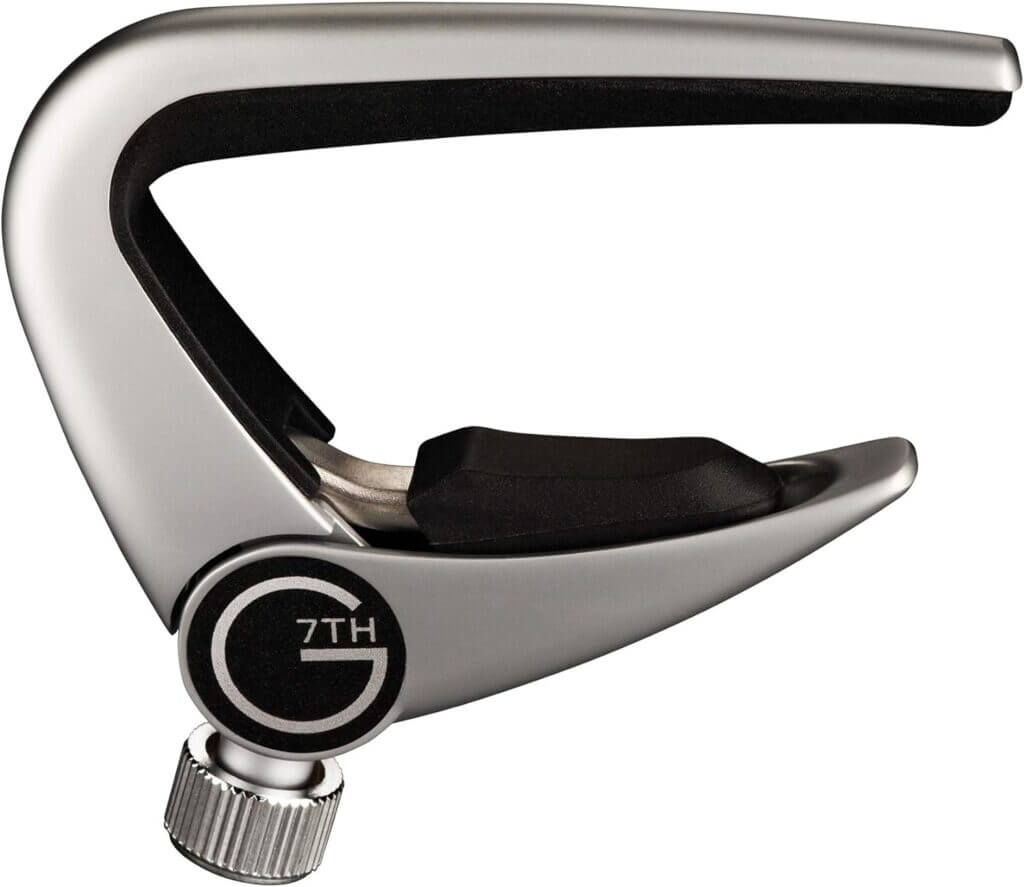
Another small, compact and less obtrusive capo, this G7th does have a screw mechanism for those of use who just don’t below hand squeezing will actually work. This is a fantastic little spare to keep in a backpack just in case anything happens to your Shubb (yep – I said it).
Guitars I’ve used it on: Guild, Gibson, Martin, Breedlove, Santa Cruz, Rain Song, Stone Bridge and Taylor.
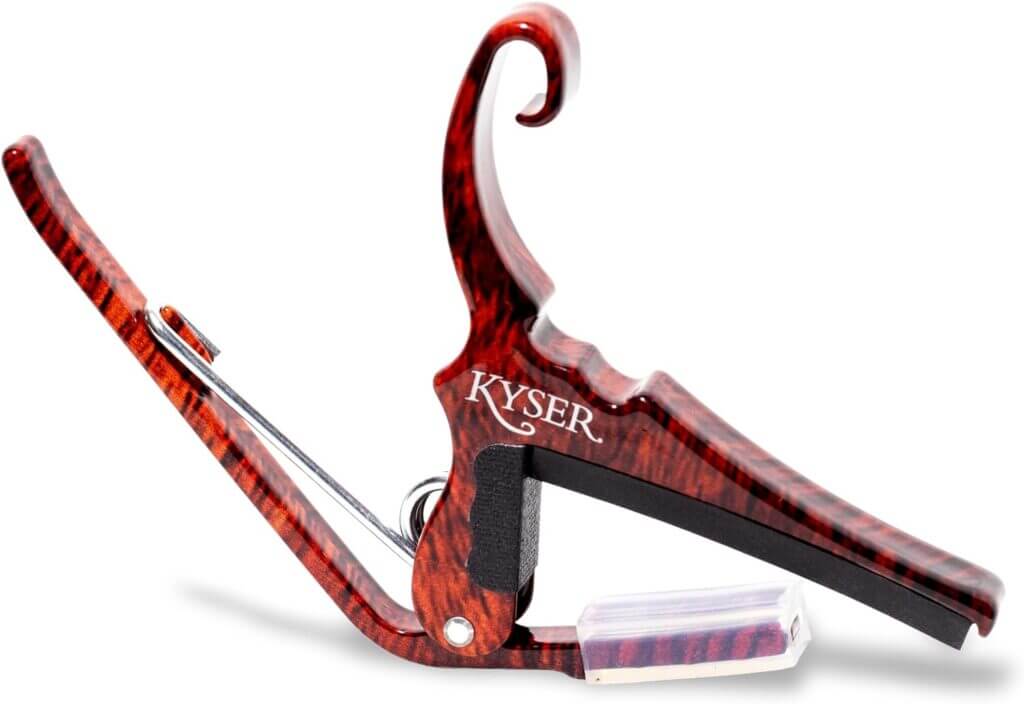
Kyser Quick Change Guitar Capo
We’ve all had them. Actually, if you were playing the guitar in the 90s, if you didn’t you were sort of an outcast. But, we’ve all grown up since then! My biggest pet peeve is the giant squeezing thing and the bottle opener on the top – which unfortunately, doesn’t really work as a bottle opener.
OK, so this one’s clearly not my favorite, but I do have a couple. They are my “can I borrow” capos. They also make a 12 string version, which is handy to have on hand for the one year full year you own a 12 string guitar. (Don’t worry, it’s a wright of passage. Now go buy that pre-war Martin!)
Guitars I’ve used it on: everything plus mandolins and banjos (yes – I said that too).